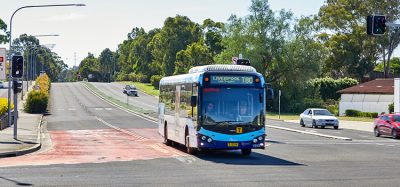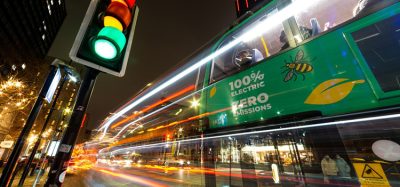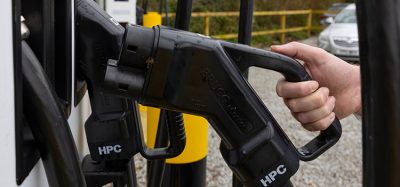Go-Ahead’s collaborative journey towards bus electrification
- Like
- Digg
- Del
- Tumblr
- VKontakte
- Buffer
- Love This
- Odnoklassniki
- Meneame
- Blogger
- Amazon
- Yahoo Mail
- Gmail
- AOL
- Newsvine
- HackerNews
- Evernote
- MySpace
- Mail.ru
- Viadeo
- Line
- Comments
- Yummly
- SMS
- Viber
- Telegram
- Subscribe
- Skype
- Facebook Messenger
- Kakao
- LiveJournal
- Yammer
- Edgar
- Fintel
- Mix
- Instapaper
- Copy Link
Posted: 19 March 2024 | Matt Carney - The Go-Ahead Group | No comments yet
Matt Carney, CEO – Bus at The Go-Ahead Group, spoke to Intelligent Transport’s Halimah Haque about the collaborative efforts driving Oxford’s electric bus initiative and its implications for sustainable urban transportation.
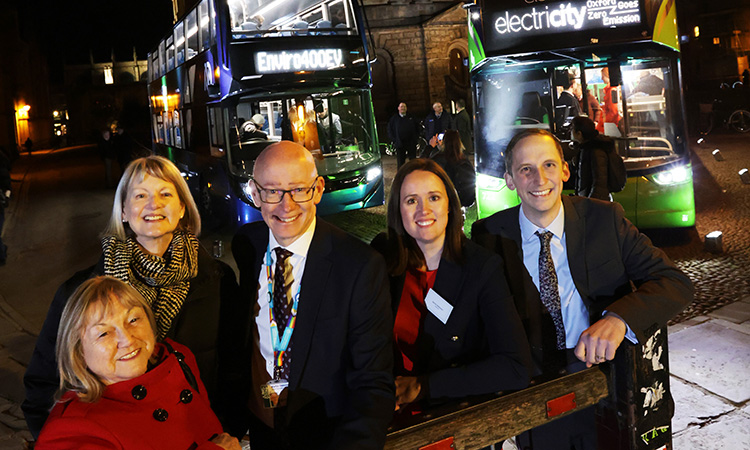

Credit: The Go-Ahead Group
Can you please elaborate on the strategic collaboration between The Go-Ahead Group, Oxfordshire County Council, Oxford Bus Company and Stagecoach in launching the ambitious project for electrifying the bus fleet in Oxford?
It’s a really exciting collaboration for us. Working with another operator, Stagecoach, and the County Council and operating under the enhanced partnership model to further improve bus services for the community is a great opportunity. It’s good for the industry, and I think it’s really good for the community.
Better bus services means more passengers on buses, and that’s what it’s all about”
This project is to launch 159 electric buses in Oxford, 104 of which will be operated by Go-Ahead’s business at Oxford Bus Company. Go-Ahead is already the largest operator of zero-emission buses in the UK, and this is a great opportunity for us to expand our capability and share our experience but, more importantly, improve the quality of our zero-emission fleet in the UK.
It’s also a really great example of partnership and people working together; private operators, council and the Department of Transport (DfT) working together to deliver benefits to the local community.
This is an £82 million investment from the partners. Of that, £43 million comes from the operators, both Go-Ahead and Stagecoach, £32 million from the DfT Zero Emission Bus Regional Areas (ZEBRA) scheme and then £6 million from the local authority.
In addition to that, the local authority, Oxfordshire County Council, has agreed to introduce bus gates and priority bus measures to increase the speed of buses in Oxford by 10%. This is critical because passengers want faster bus services. Better bus services means more passengers on buses, and that’s what it’s all about.
Given Go-Ahead’s commitment to climate action, could you please elaborate on the significant role that electrification plays in achieving the company’s broader sustainability and climate action targets?
Go-Ahead’s committed to being a net zero business by 2045, and by reducing our carbon emissions by 75% by 2035″
Go-Ahead’s committed to being a net zero business by 2045, and by reducing our carbon emissions by 75% by 2035. As the UK’s largest operator of zero-emission buses, I think we’re well on our way to achieving that.
We have a 6,000-strong bus fleet across the UK and, in 2024, we’ll have 1,000 zero-emission buses in operation. And that number would nearly double in 2025. So, we’re seeing a rapid increase in the number of zero-emission buses in our fleet, both in London and in the regions of the UK.
We certainly recognise our position as leaders in the sector, and we’ve got a responsibility to continue on our path of electrification. We also know that a single operator can’t do this alone, and this is why partnership is really important.
Partnership between private operators, our local government and the national government is really important, not just around delivering zero-emission buses but, as I said earlier, increasing or delivering bus priority schemes. People want faster buses and more reliable bus services, and by working together to deliver that, we see more people on buses, which means less people in cars.
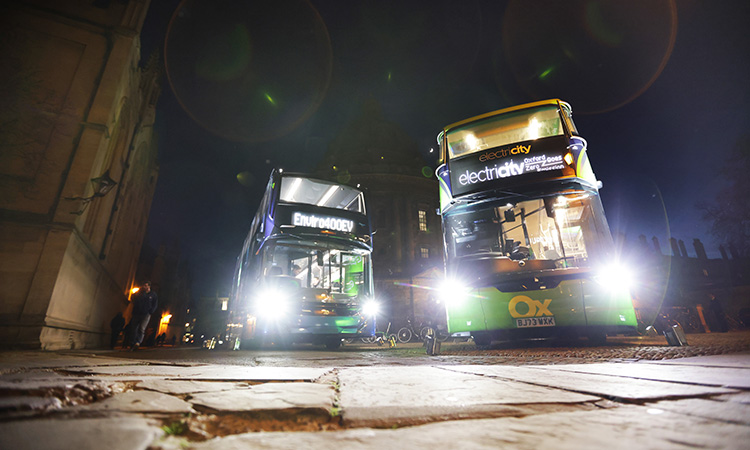

Credit: The Go-Ahead Group
As you mentioned before, as part of this scheme, Go-Ahead is introducing 159 battery-powered buses. How does the company plan to manage the operational challenges that are often associated with electric bus fleets, such as charging infrastructure, maintenance and ensuring seamless daily operations?
The transition to zero-emission busing is not as complex as some people make it sound or might think. It’s not a revolution – it’s an evolution in busing”
The first thing I would say is that the transition to zero-emission busing is not as complex as some people make it sound or might think. It’s not a revolution – it’s an evolution in busing.
You’ve got to keep in mind that Go-Ahead has 10 years’ experience in operating zero-emission buses. In 2013, we were the first operator to introduce zero-emission busing and, as I said, in 2024, we have 1,000 on the road, so we have a lot of experience.
But, naturally, there’s areas of work where we always strive to do better and improve. I think that standardising maintenance practices in electric buses is really important to reduce the lifetime cost. Investing in monitoring and charging software to reduce energy usage and infrastructure cost is really important.
Optimising our schedules to ensure that the buses run as efficiently as possible and ensuring that we load or we use energy at times of low demand is equally important – and responsible, I guess – for the broader community.
Lastly, working with the energy infrastructure providers, I would say, is the only challenge. The only real challenge in electrifying a fleet is getting enough energy into our garages and depots. So, it’s critical that we work with energy providers and give them a medium-term view, and preferably long-term view, of what that energy looks like.
I genuinely believe that too many people think that this is harder than it is, and I think there’s a lot of vested parties with vested interests to make it more complicated.
Oxford Bus Company has converted its Cowley House Depot into one of the largest electric bus charging stations in Britain. Could you please provide insights into the planning and execution of this charging infrastructure project and how it supports the daily operations of the electric bus fleet?
The first thing is understanding your need or energy requirements from the grid. That’s the first critical thing that you need to do when considering and planning for electrifying a fleet to the depot.
It’s really important that you don’t just take a short-term, but a medium- to long-term view of what that energy is, particularly given the timeframes that it takes to get energy from the grid.
So, in the case of the Oxford Bus Company, we took a medium-term view of what the energy was, and we’ve electrified that depot with eight megawatts of power. Eight megawatts will certainly charge more than the 104 buses we have today, and it’ll provide capacity for the future of zero-emission busing at that depot.
What that does, though, is gives us certainly enough energy to electrify and power 104 charging stations or charging points in the garage. That allows every single one of our current buses to charge simultaneously if we need it. But, importantly, we do not charge when there’s a high demand in the grid. We try to charge when there’s a low demand; so, overnight. Those 104 charging points each provide 150 kilowatts of DC power, which allows those buses to drive more than 170 miles per day.
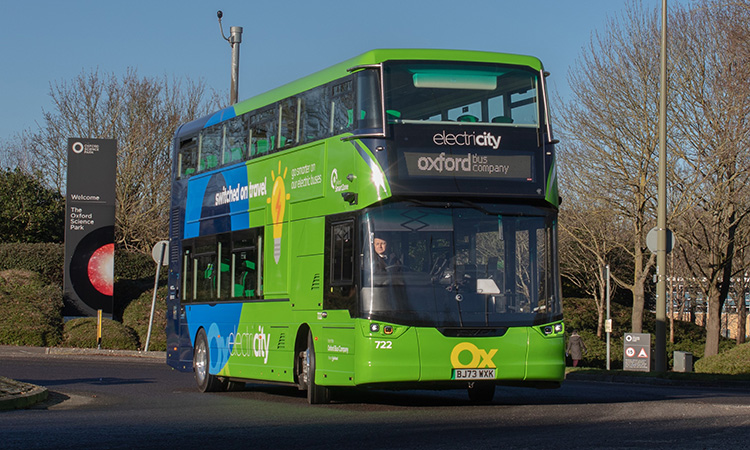

Credit: The Go-Ahead Group
What challenges and opportunities do you foresee in scaling up electrification efforts for public transportation nationwide?
I believe that the greatest challenge is ensuring that we have enough energy from the grid and, importantly, enough renewable energy”
Well, the opportunities are numerous. Most importantly, the opportunity to provide a cleaner and greener bus service to the community. The opportunities and the benefits of that are profound, I think. And working together across the sector with private operators, local councils and central government is critical to that.
The UK government’s ZEBRA scheme is a great initiative and is very welcomed, and I believe that is critical to allowing the regional bus businesses to catch up to London on the electrification of the fleet.
There’s certainly further opportunities looking at third-party relationships and letting third parties charge in bus depots. I think bus operators are probably more advanced than some other sectors in electrification, and there’s an opportunity to allow people to charge within those depots and garages.
There’s also opportunities in bus to grid, so taking the unused energy from a bus at the end of the day and putting it back into the grid where there’s a high demand. So, there’s an untold number of opportunities in this field.
The challenges aren’t that great. Again, this is just an evolution of busing. I think that the challenge of working together as an industry is an easy one to overcome, and I think this is a great example of how that works. I believe that the greatest challenge is ensuring that we have enough energy from the grid and, importantly, enough renewable energy. Having renewable energy to support a renewable bus is critically important. So, again, it’s taking a medium- to long-term view of what that looks like and working with energy providers to provide that.
Looking ahead, how does the Go-Ahead Group plan to use the Oxford Initiative as a model for similar projects in other cities?
I think that the Oxford Initiative is just that. It’s actually using this model, which is already hugely successful, and recognised as a great example of how operators, local government and national government can work together to provide cleaner and greener buses to the community.
It is as simple as taking this model and working with other councils and regions in the UK to adopt a very similar one. It’s also really important that we not just look at electrification of buses, but also improving bus services, particularly by utilising bus priority measures.
In an ideal world, what would a perfect public transport system look like to you?
I think a green and sustainable, reliable and punctual bus service is what everybody wants. As I mentioned earlier, working together, I think that we can all achieve that.
Collaboration is definitely the answer to everything, isn’t it? It’s a business case that needs to stack up, right? And I think that’s why the ZEBRA scheme is so critical. I’m new to the UK market, having come from Australia, but I think that it’s a really good model. You don’t see this model in too many other countries, so I genuinely think that Oxford is a great example that can be replicated elsewhere.


Related topics
Air Quality, Alternative Power, Fleet Management & Maintenance, Mobility Services, Public Transport, Sustainable Urban Transport
Related modes
Bus & Coach
Related cities
Oxford
Related countries
Australia, United Kingdom
Related organisations
Department for Transport (DfT), Oxford Bus Company, Oxford County Council, Stagecoach, UK Government
Related people
Matt Carney




